The Trek Powerfly 8 FS is a full suspension trail ebike with 130 mm RockShox air suspension. What really sets it apart from others in the space right now is the straight downtube (offering a higher stiffness to weight ratio) and adjustable seat stays with Mino Link plates that can be flipped for a slack stable ride or upright quick ride. Trek is a well-established brand, one of the “Big Three” leaders in the US, and their network of dealers provide test rides, maintenance, and support that some other smaller electric bike companies just can’t. With this model, you’re getting a high-quality drive system from Bosch, four frame sizes offering improved fit and an outstanding eleven-speed drivetrain with a unique clutch and chain guide system. While I was not able to test it thoroughly on mountain trails, I had enough time romping around on some small hills and grassy areas to appreciate the purpose built frame and ebike-tuned suspension. The areas that let me down, however, were the average weight (~50.5 lbs) and lack of bottle cage bosses. The straight downtube and air suspension do cut weight but perhaps the Aluminum frame is just thicker and sturdier than some competing offerings that weigh slightly less. The Trek website says that the Powerfly can support up to 300 lbs which is more than a lot of other e-bikes (most tend to say 250 lbs). With tubeless-ready plus sized tires, Trek’s Boost technology (longer axles for wider spoke bracing angle), a variable position seat post dropper, and enormous hydraulic disc brakes… it’s a capable product. And at $5k, it’s priced on par with the competition.
Driving this bike is a high-torque Bosch Performance Line CX motor. It offers up to 75 Newton meters of torque while the standard Performance Line model maxes out at 63 Nm. Even though it’s rated at 250 watts nominal, it peaks out above 500 watts and does not struggle with hills if you shift appropriately. The chainring is extra small with just 15 teeth. It spins about 2.5 times for every crank revolution that you pedal and it responds to three signals: rear wheel speed, pedal cadence, and pedal torque… at one thousand times per second. Notice how clean and integrated the motor looks on this bike. Bosch centerdrives have become more compact in recent years and the slim black casing with molded chain guide here is perfect. There’s a small chainring guard to keep debris out and the chain from bouncing off track. Having seen many other Bosch powered electric mountain bikes, this one struck me as the cleanest and most compact without sacrificing performance. Even though I was wearing pants during this test, I didn’t feel concerned about snags and grease because of the way the drivetrain was setup. And at the rear, the 11-42T cassette offers plenty of range for climbing and descending. The motor assists smoothly up to 20 mph, making this a Class 1 electric bike, and produces a distinct whining noise at higher RPM, but I’d rather have a little noise than limited support. The Bosch motor maxes out at 120 RPM while some others max at 100 which feels sluggish in lower gears if you shift down to climb. One additional highlight with the motor design that I liked was an Aluminum skid plate designed to protect the bottom bracket area. It’s vented, appears to be replaceable and curves up at the edges creating a beautiful and functional protective shield against rocks, sticks and other trail obstacles.
Powering the Powerfly 8 is a high-capacity Bosch Powerpack 500. That’s 25% larger than the older Powerpack 400 with less than 0.5 lbs of additional weight. And the mounting interface is backward compatible! Charging is still fast and convenient, on or off the bike, with the 4 Amp Bosch charger. It only weighs 1.7 lbs and is compact enough to toss into a medium sized hydration pack. Expect 30+ miles of range in the higher levels of assist, even on rigorous terrain. If you’re doing cross country with a splash of trail, then 50+ would not unreasonable. The pack stands out a bit more than some of the Brose powered ebikes from Bulls and Specialized but the battery is easier to remove and cheaper to replace. I love the loop handle at the top, the LED charge indicator on the side and the solid locking core. Being black, the battery blends in perfectly with the matte-black paint job on the Powerfly. Note the black motor casing, cable covers, and spokes. In addition to powering the bike, the battery also feeds to the large, backlit display panel which has a Micro-USB power port on the right edge. This could be used to maintain a phone for GPS or Strava or other portable electronic device. Note however, that the port only sends 5 Volts at 500 milliamps vs. 1 mA required for iOS device charging. I’m not sure of the reasoning but wish Bosch would update this for iPhone users.
One thing that has not been updated for 2017 is walk-mode, I was told by Trek and Bosch that it is disabled. Normally, if you press the walk button on the top of the control pad (located near the left grip) then hold the plus button, the bike will power itself. Given the 50ish lb weight of this bike, being able to have it assist you when climbing by foot is a nice feature, and most other Bosch powered models do have this, but apparently Trek didn’t want it to be confused with a throttle or had other reasons (my apologies for confusing this in an earlier version of the review where I said that walk mode did work). Some highlights of the display panel and control pad include the ability to calculate range on the fly. Just press the i button several times to cycle through trip stats like odometer, max speed, and clock. Once on the range menu, use the plus and minus keys to select from the four levels of assist and watch as the bike dynamically estimates how much further it can take you based on battery level, assist level and the last three miles of performance. This is much more useful than the five battery ticks on the infographic at the top of the display. Raising or lowering assist level can be done easily, without looking down at the display, because the keys produce a tactile click and are within reach of the left grip. I usually ride in the two middle levels of assist to extend range and flex my muscles. It can be a lot of work to ride a bike like this completely unpowered, especially with the larger knobby tires, but it’s not impossible and once up to speed, it coasts beautifully. In fact, coasting downhill unpowered can be quite satisfying, very predictable.
There’s not a lot to complain about with this bike and I like that it introduces some new technology. From the straight downtube with Block-Lock stem, risers and stem cap to Boost long axles and the adjustable stay lengths… it’s a standout. But it’s still a heavier product, one that doesn’t allow you to bunny hop as easily as an unpowered mountain bike. I don’t mean to complain about this product, it’s the same situation with most electric mountain bikes today. it’s a different kind of riding, one that allows you to flow uphill, enjoy your rest days, build trails more efficiently or keep up with advanced friends. I guess I was excited about the air suspension and material savings of the downtube. Trek is a leader with bicycle technology and perhaps one day we will see a product like this that offers a lighter battery with less range in favor of more control. For today, the ability to adjust how the bike handles using Mino Links is a great step. And even though you can’t fit a bottle cage in the main triangle, there are adapters for the saddle rails and most people just use a hydration pack. The high convenience and wide availability of the battery design are great benefits. This is an excellent electric mountain bike with one of the best drive systems currently available, my personal favorite, and it’s probably going to be easier to find in person and test ride than a lot of competitors.
Pros:
- Unique adjustable length seat stay feature, the “Mino Link” plate allows you to change the geometry from upright and quick to slack and stable for trail or climbing to enduro and downhill riding respectively
- The Bosch Powerpack 500 battery is one of the most compact, lightweight, and energy dense products around… the mounting interface is backward compatible with the Powerpack 400, I like that both packs have a solid locking plate, integrated LED charge indicator and loop handle for transport
- Quick release wheels, removable display panel, and removable battery pack make this an easy bike to transport or park securely
- Sturdy thru-axles and longer hubs with Boost technology provide support for wider 40 mm rims and fatter 2.8″ plus sized tires, the tires offer stability at speed, improved traction, and decreased deflection
- The tires and rims are setup to run tubeless with strips and valves included, this allows you to ride at lower PSI for soft terrain and reduces weight
- Large hydraulic disc brakes from Shimano provide excellent stopping power, you get a 203 mm rotor up front and 180 mm in the rear, this provides smooth stops with just a finger or two
- Multiple compression clicker positions on the suspension fork with lockout, the rear suspension offers rebound and compression adjust, both are lightweight air that can be sagged to fit a range of rider weights, the rear suspension is factory tuned for this heavier bike
- Molded chain guide pairs perfectly with an alloy guard to keep your pants mostly clear and the chain on track, it’s compact and durable… nicer than some of the other e-mountain bikes I’ve seen which might have one system or the other but not both
- Purpose-built frame was stiff and responsive, internally routed cables and seat post dropper kept it clean and the black color scheme allowed the battery, motor and wires to blend in
- Eleven-speed drivetrain offers more than enough pedal range for climbing and topping 20 mph, though in my experience it can be difficult to do without assist given the weight and tread here without descending
- Available in four frame sizes to improve rider fit, the seat post dropper offers “infinite” height positions vs. steps and you get three riser stacks to play with for stem height
- Trek invented Boost technology for wider, stiffer axles to support 29er wheels and now the 27.5″
plus sized tire setup with a wider bracing angle on the spokes, I love the knock-block stem, headset top cap, spacers and frame chip and rubber hartzell hug impact-absorbing downtube bumper backup protection system (to prevent oversteer into the straight shot downtube which could damage the fork and frame), by making the downtube straight they reduced the strength to weight ratio and improved stiffness - Sleek motor integration with low-profile plastic covers and a plastic moulding piece at the base of the battery pack, it brings everything together visually
Cons:
- The Bosch Performance Line CX motor is fast and powerful but produces an audible whine at high RPM,
it’s louder than Brose and Yamaha in my experience but not by a lot - No room for bottle cage bosses, expect to wear a hydration pack or add a cage adapter to your saddle
- Heavier than I was expecting at 50.5 lbs, the high capacity Bosch Powerpack 500 only adds half a pound the air suspension shouldn’t add much
- Standard chainring teeth vs. narrow-wide for increased grab, no chain pulley to raise the chain and reduce kickback (though I did not experience any), the molded chain guide should prevent drops
- Apparently most Trek mountain bikes do not come with pedals, it’s a minor gripe, you’ll have to pick up some aftermarket (the bike I tested had Bontrager Line Pro alloy platform with adjustable height pins)

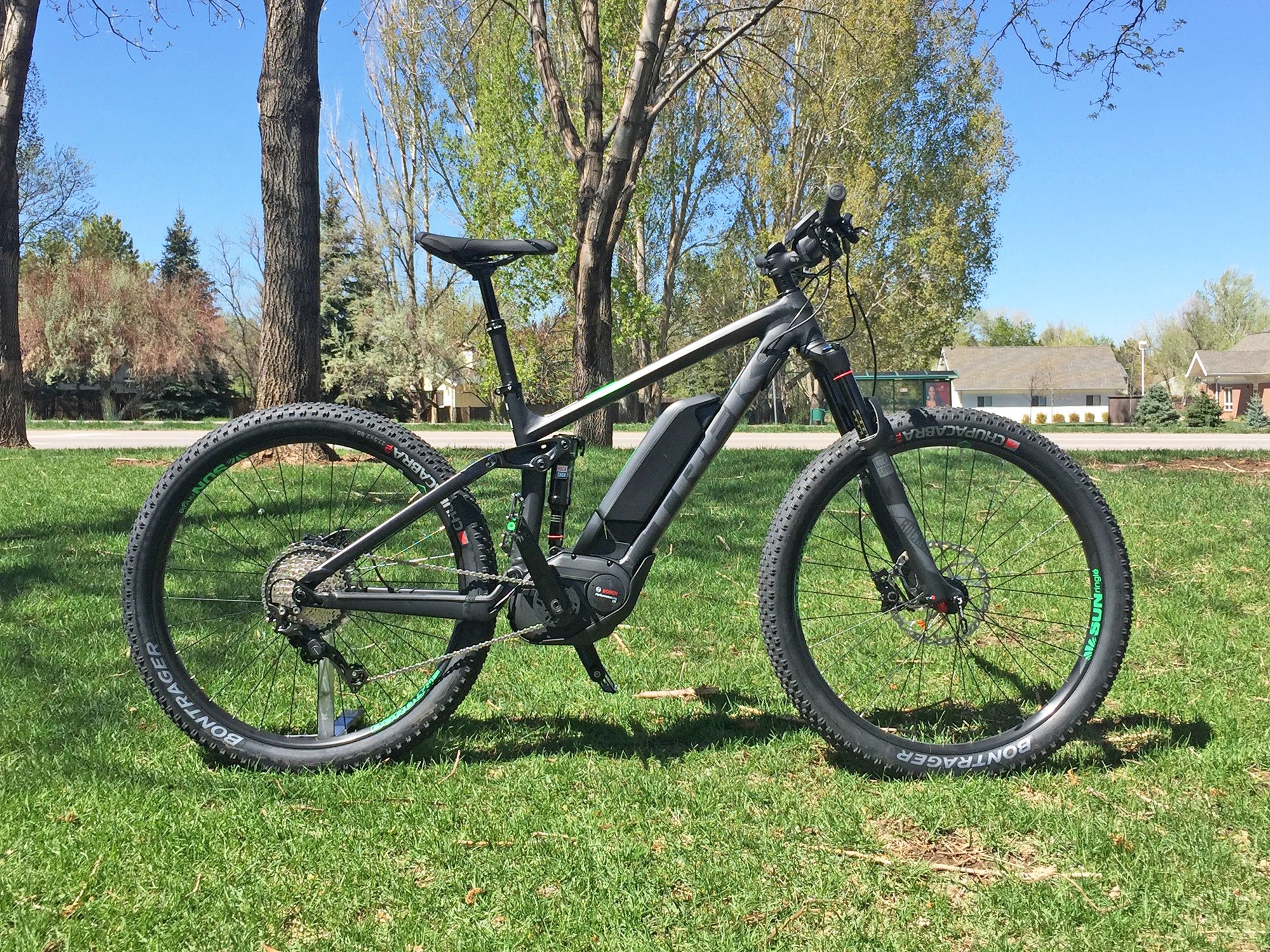
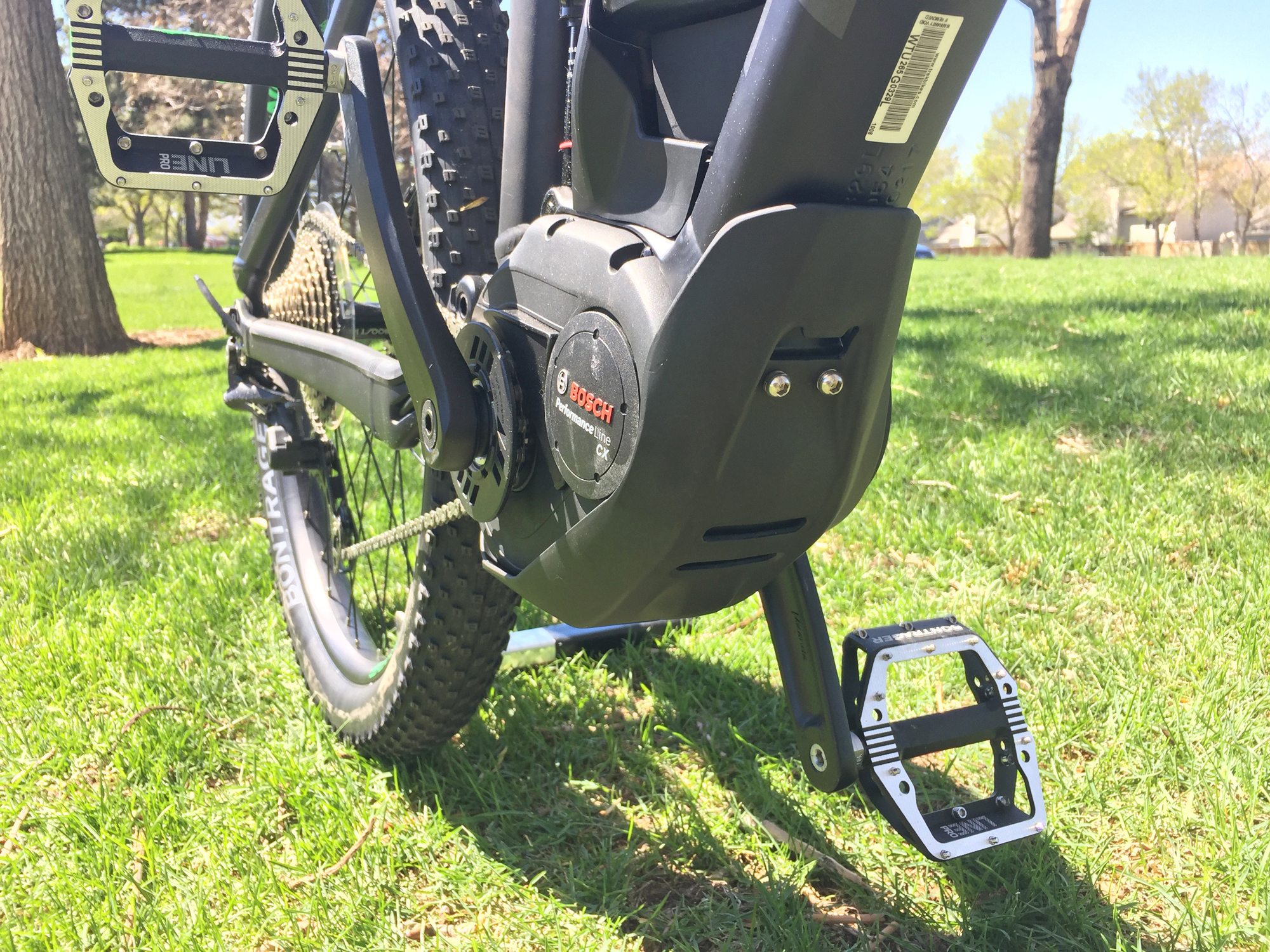

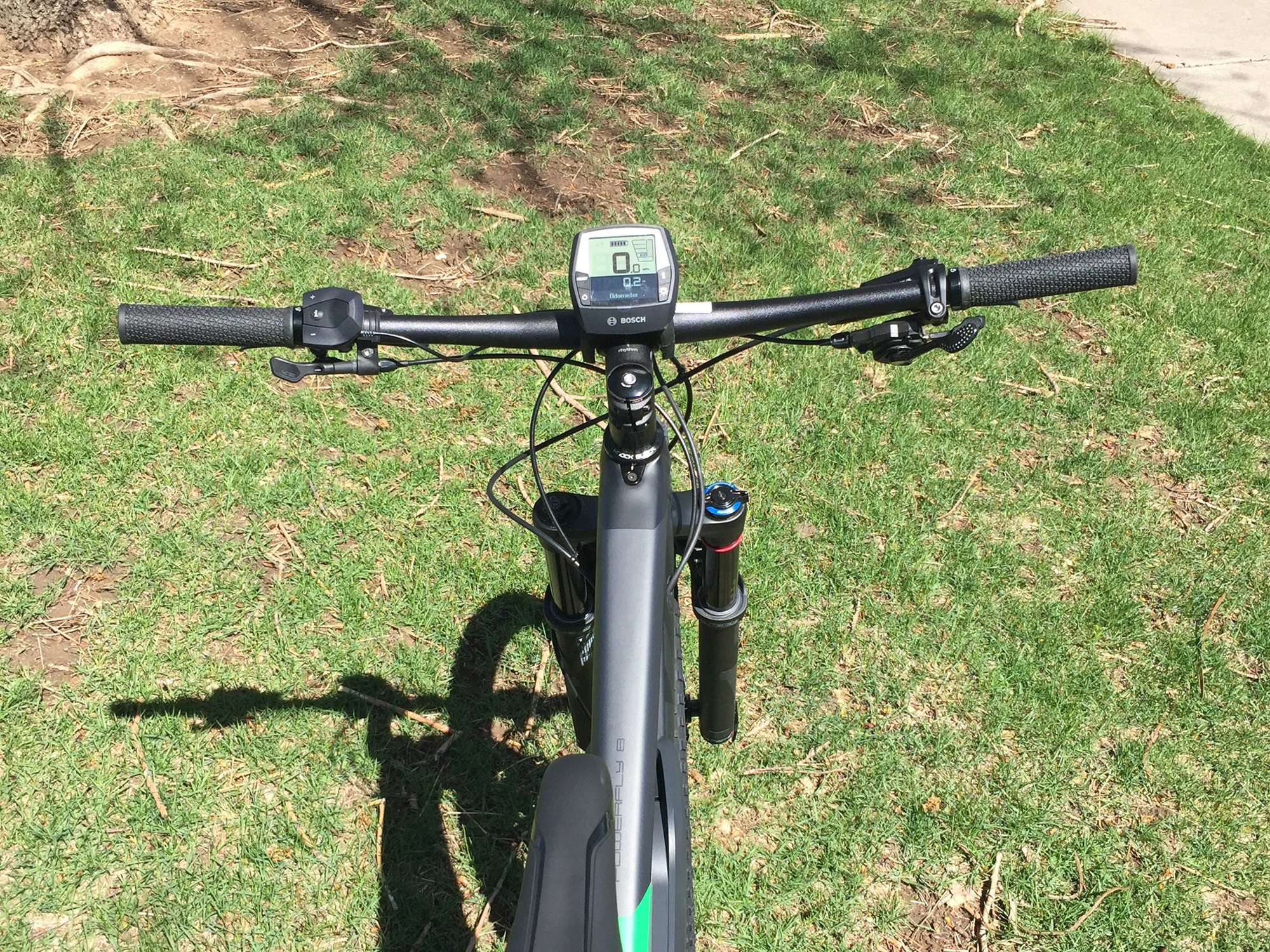
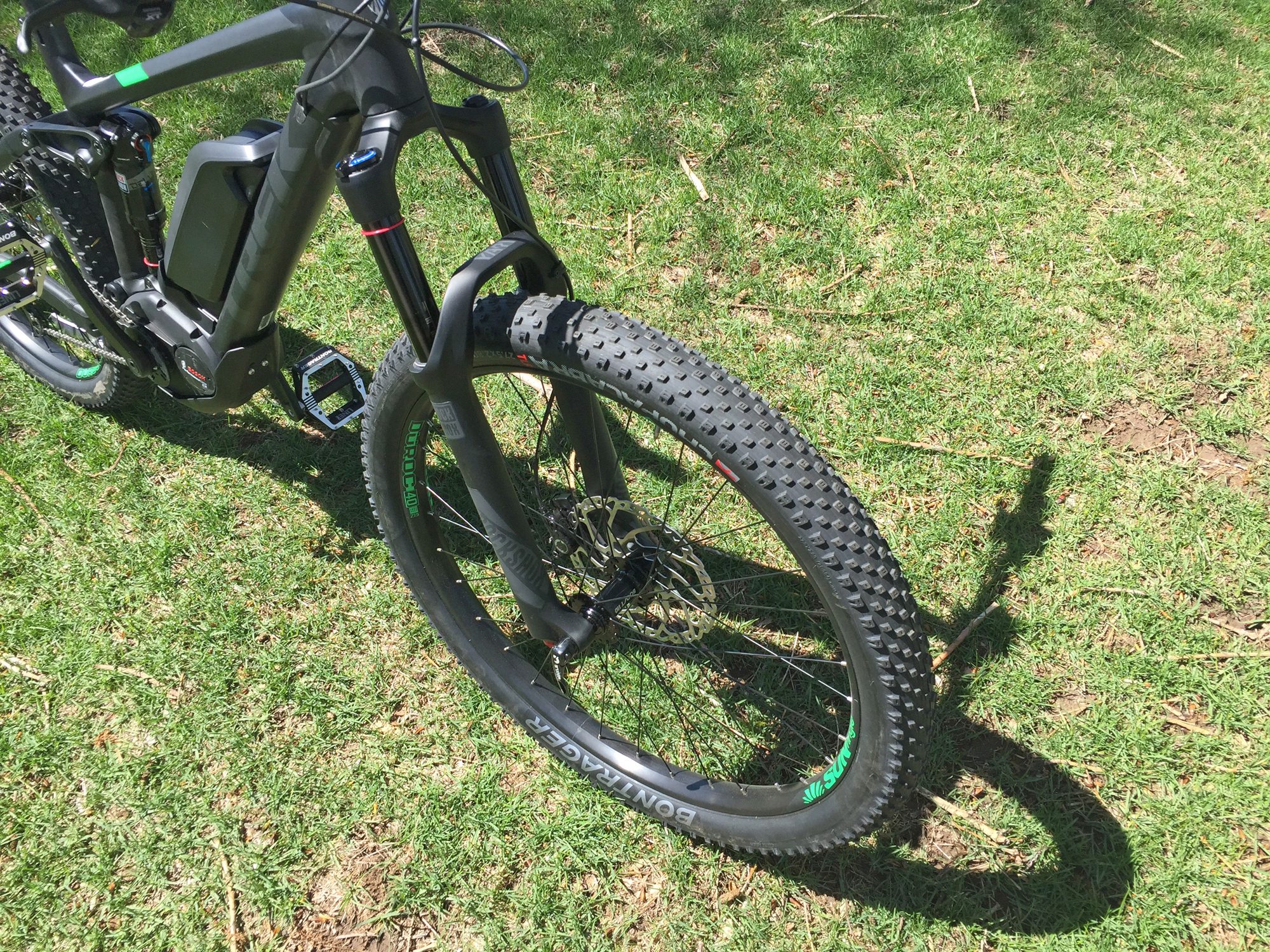
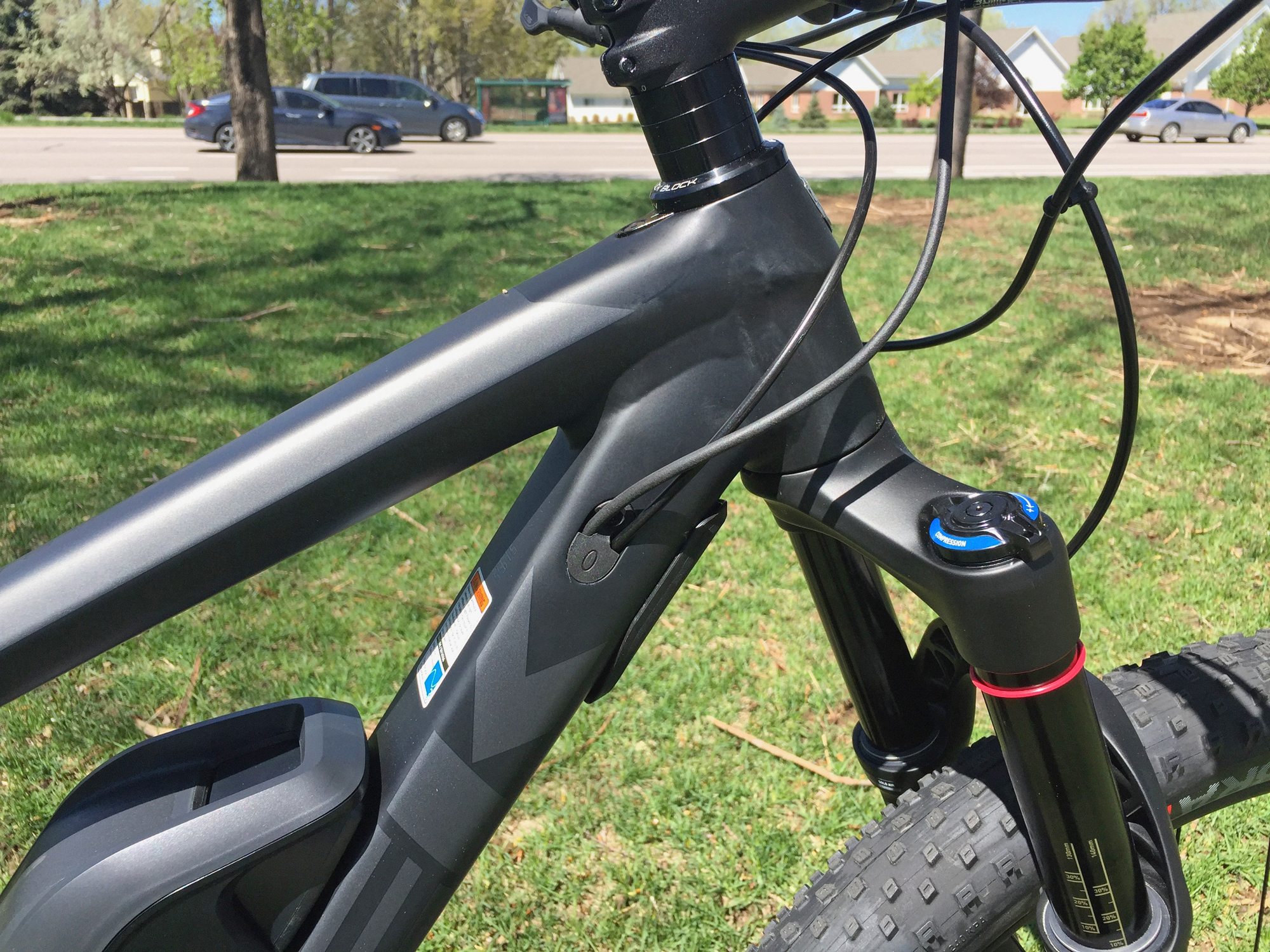
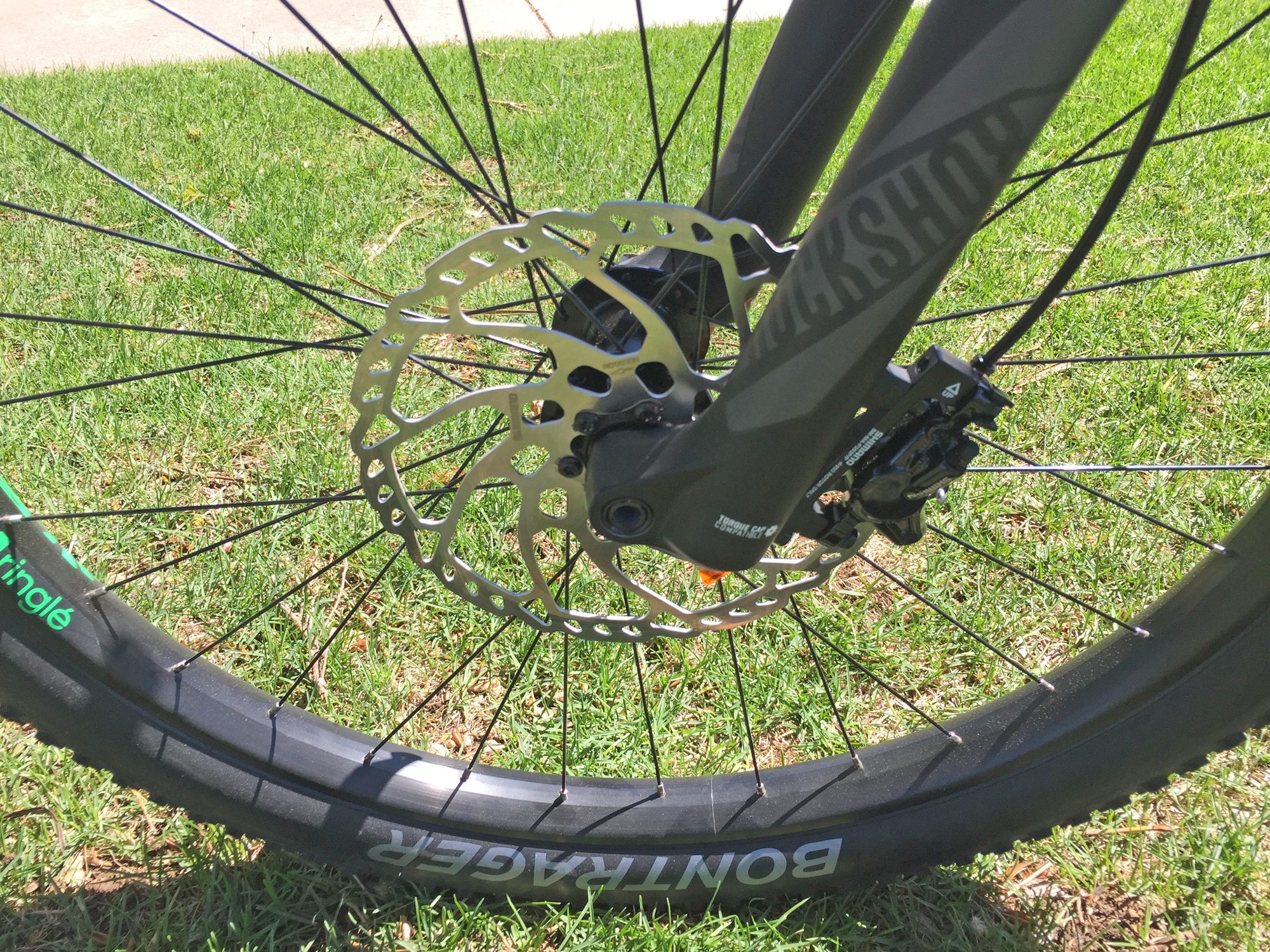
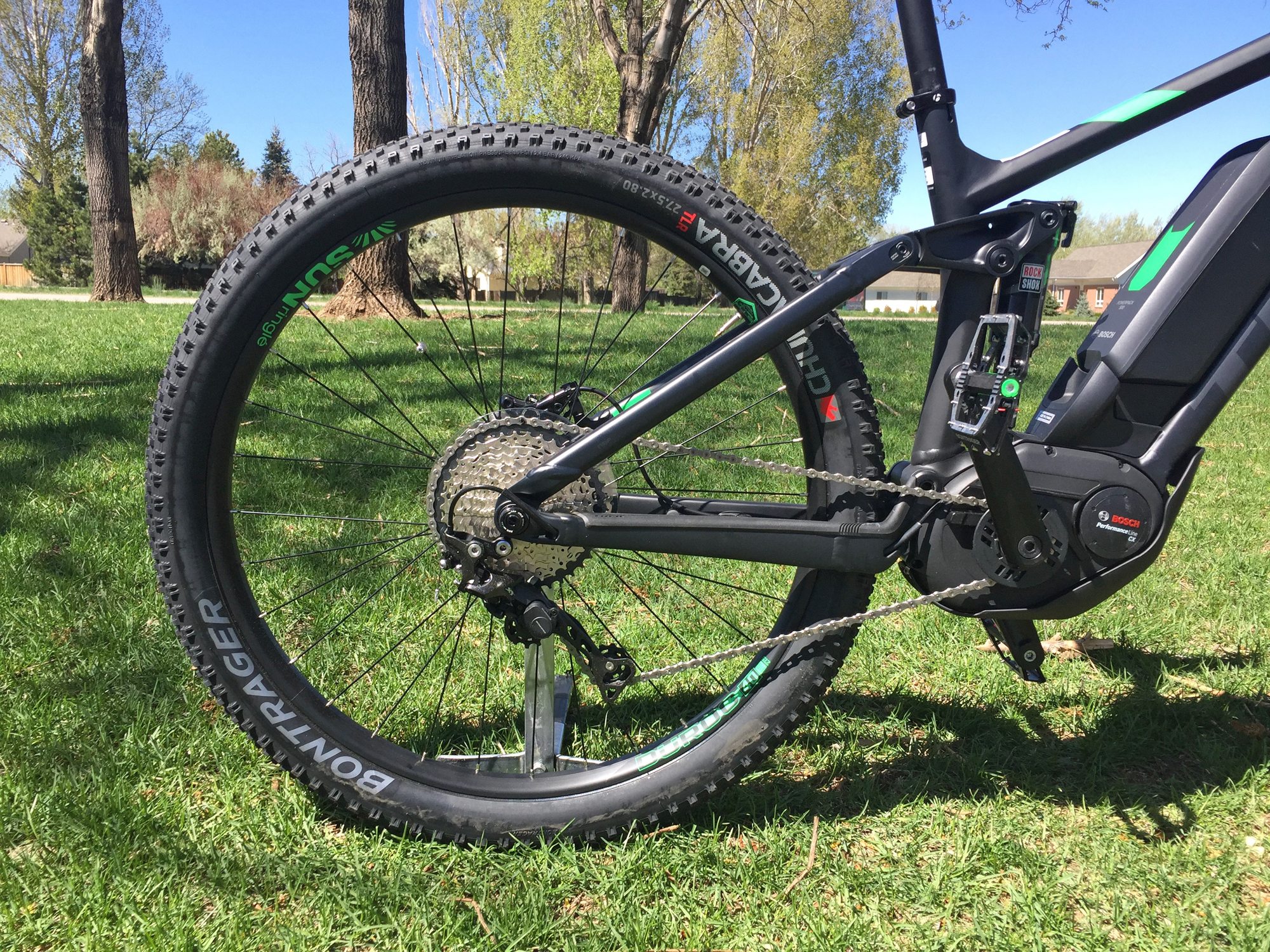
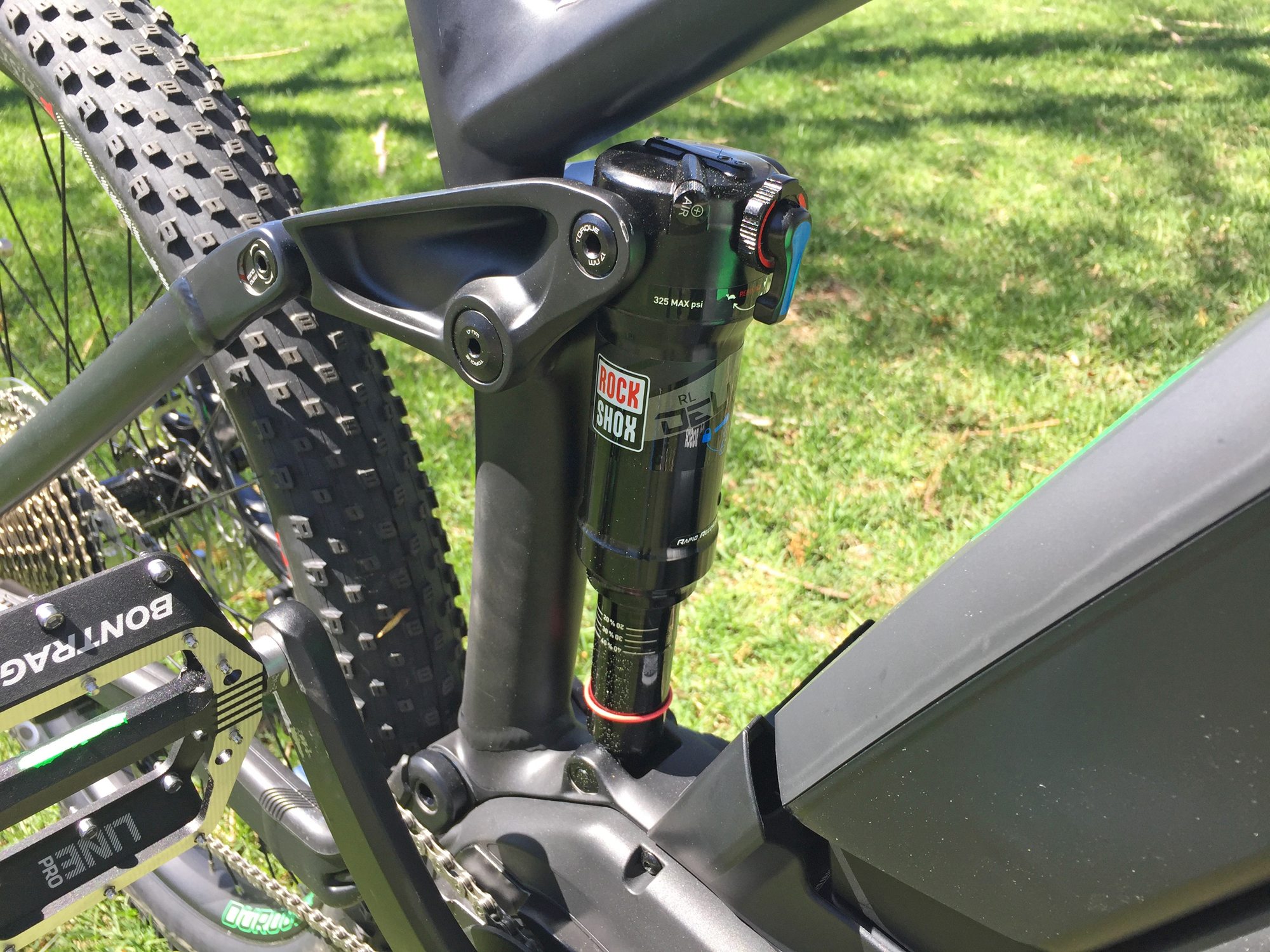
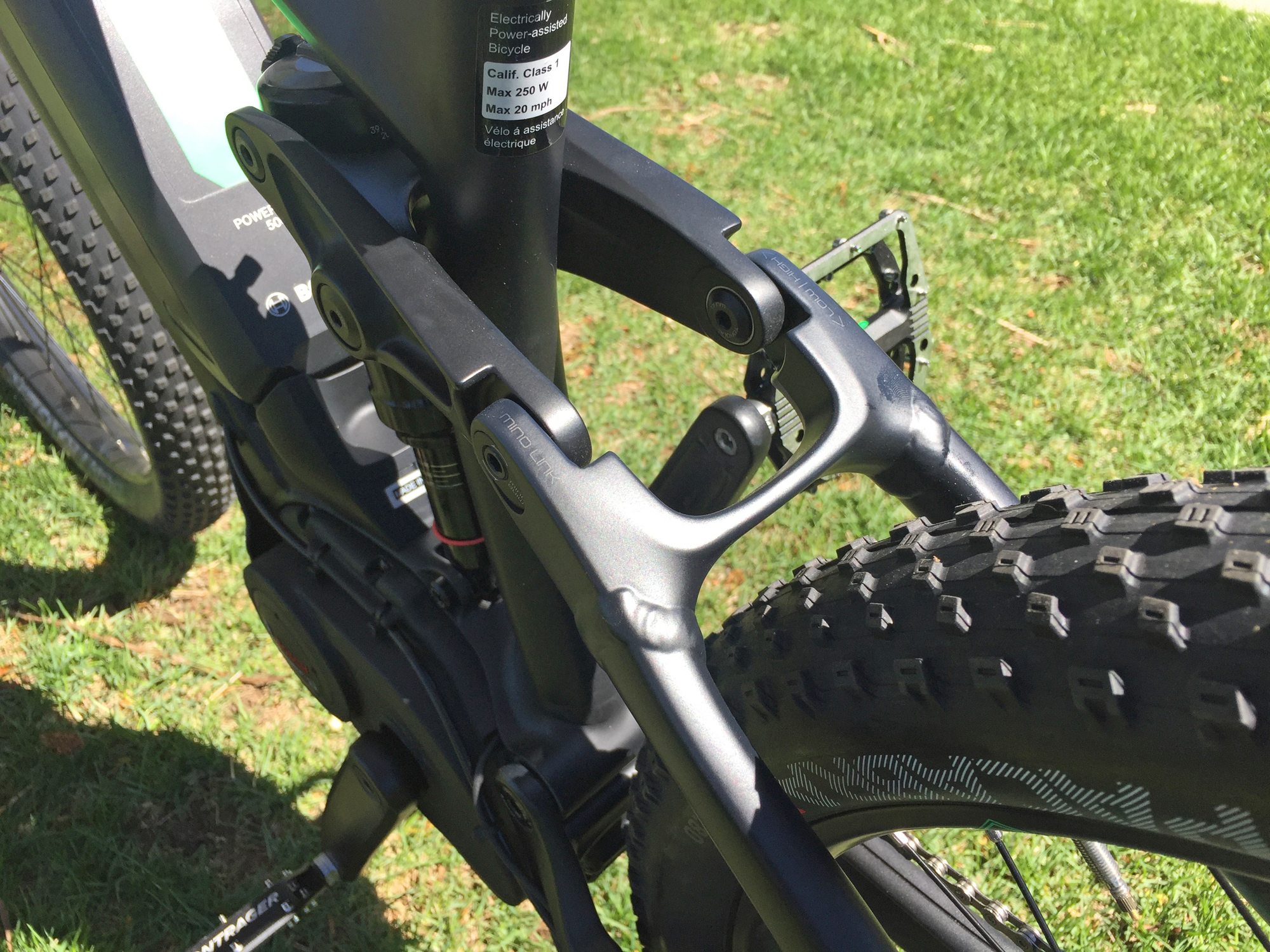
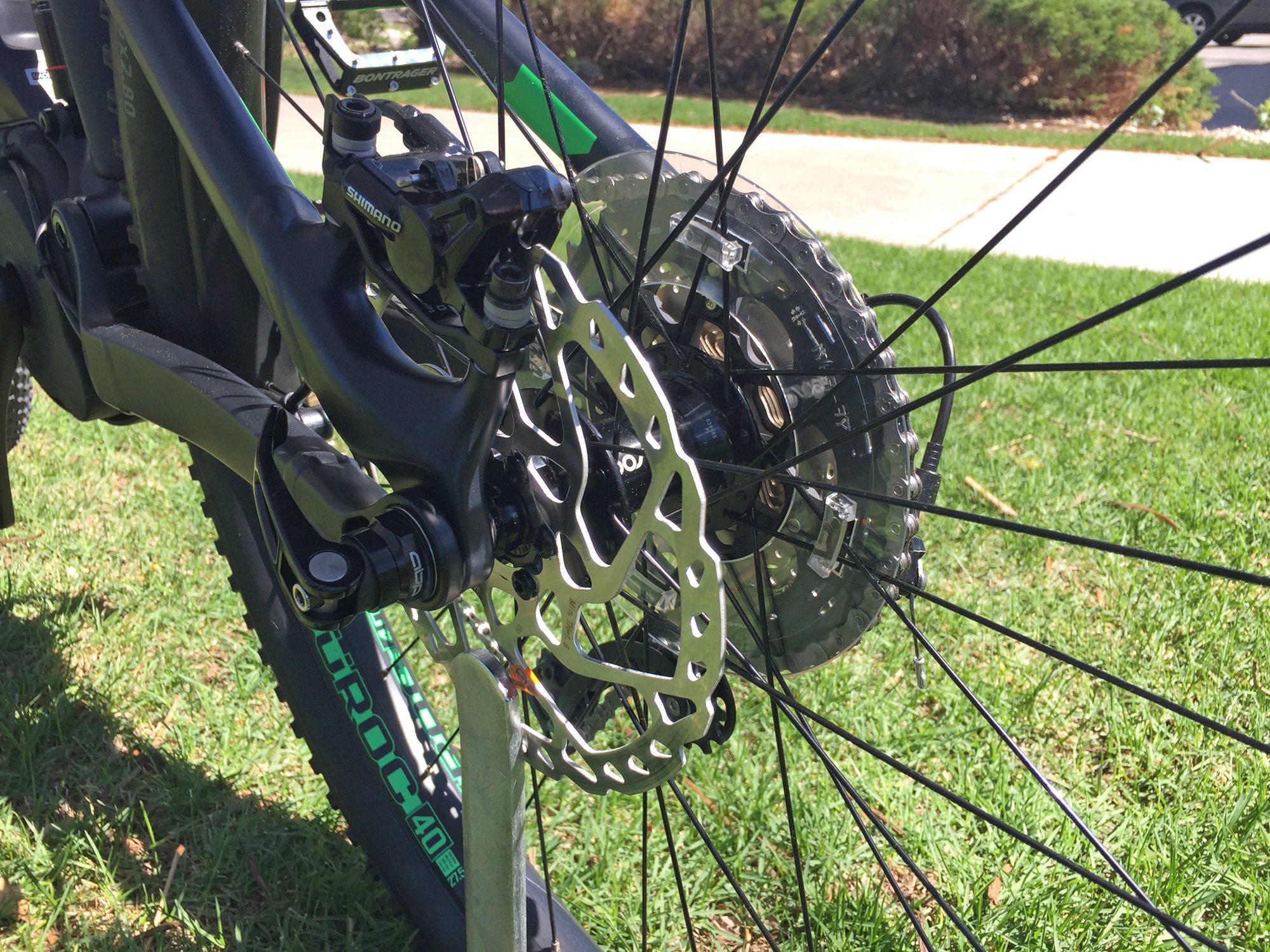

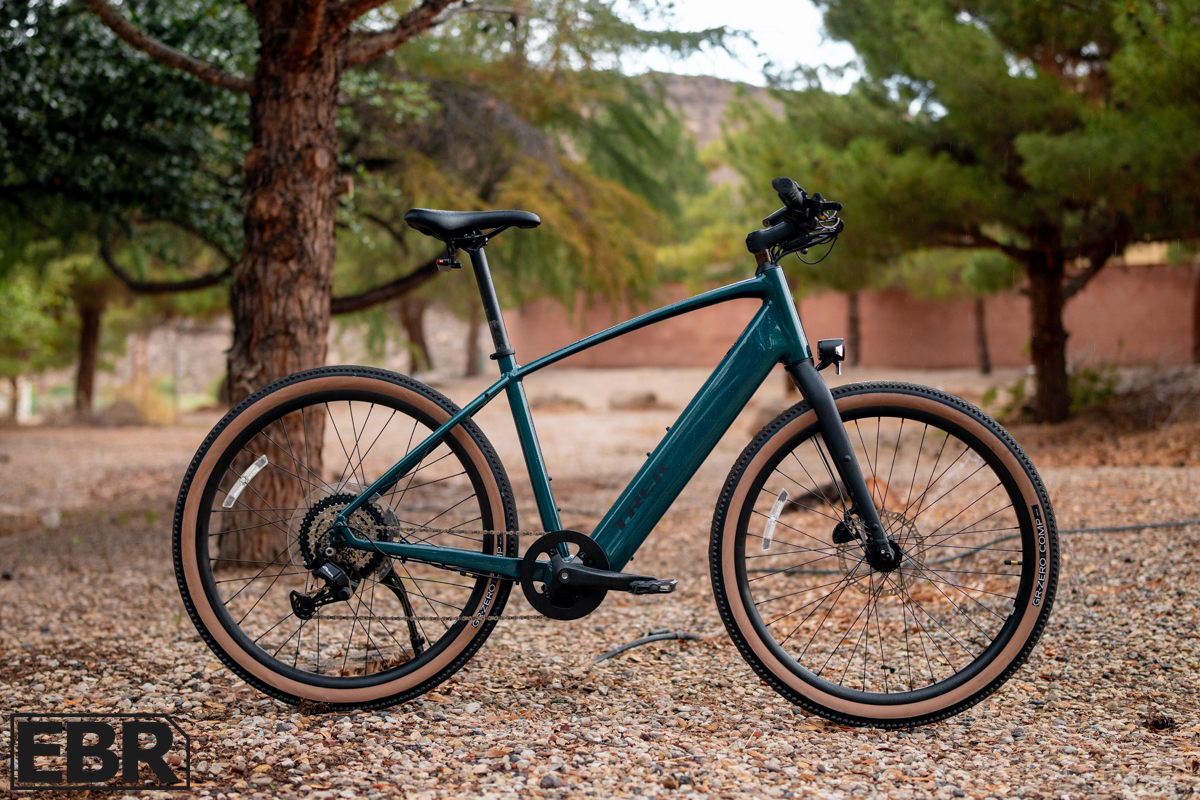
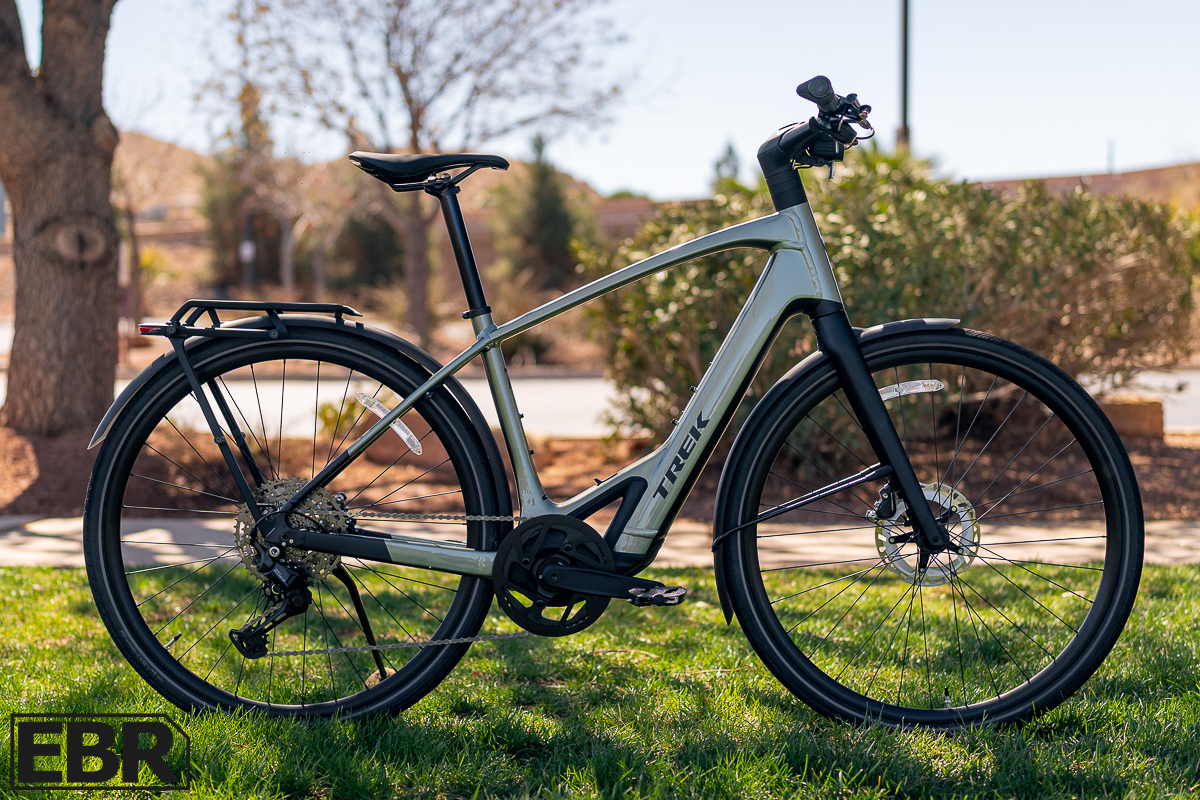
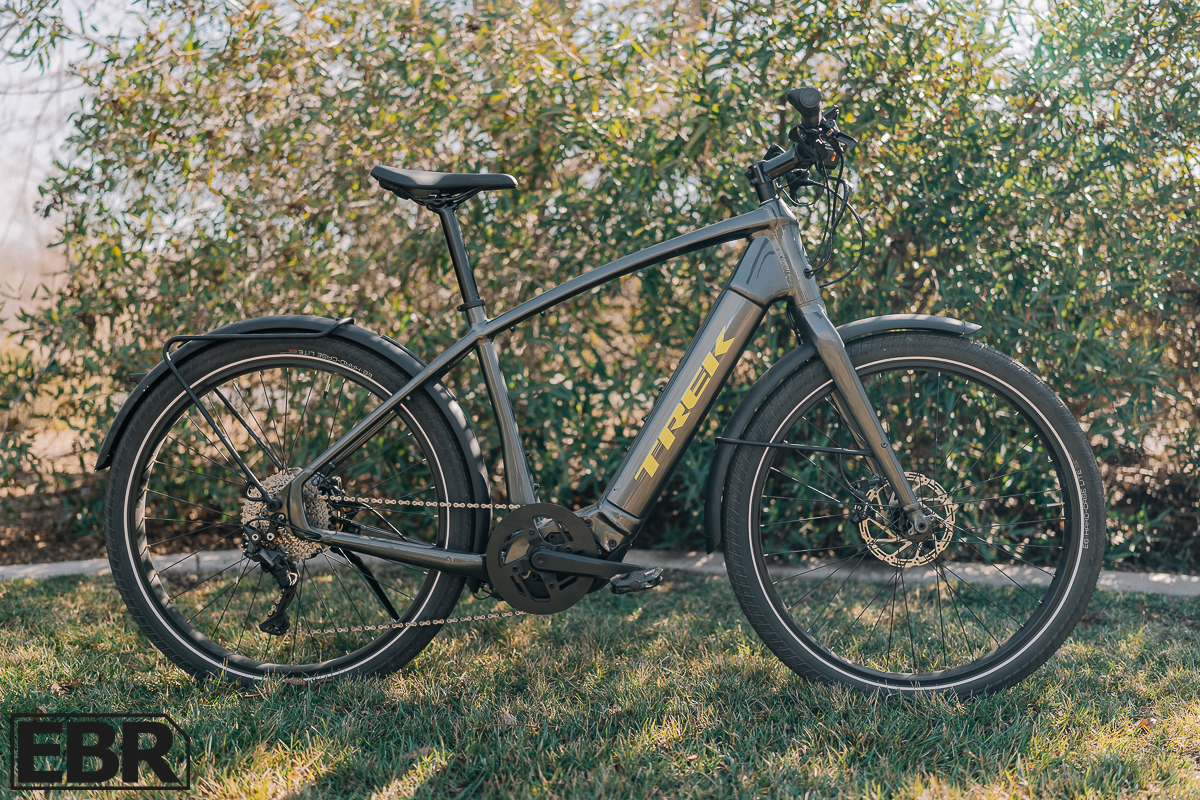
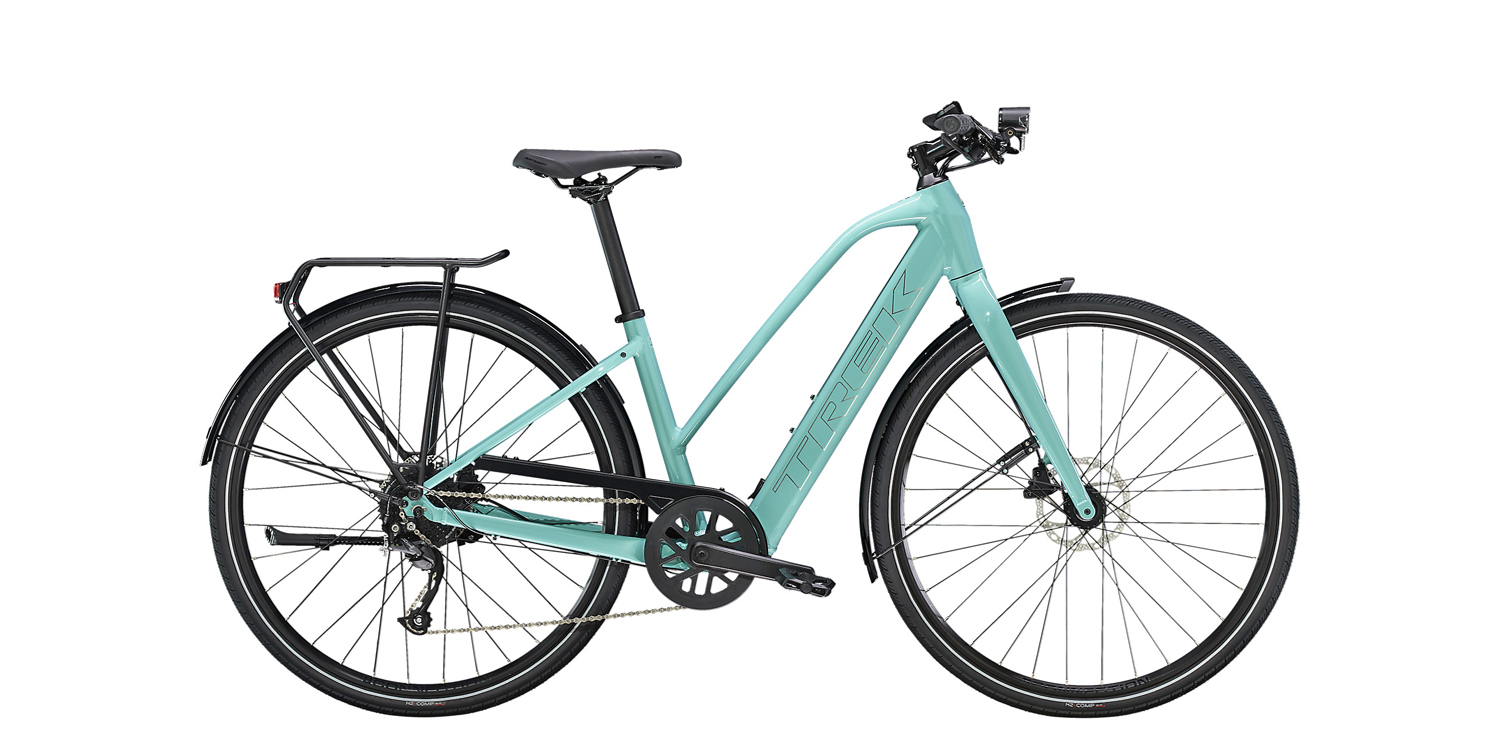
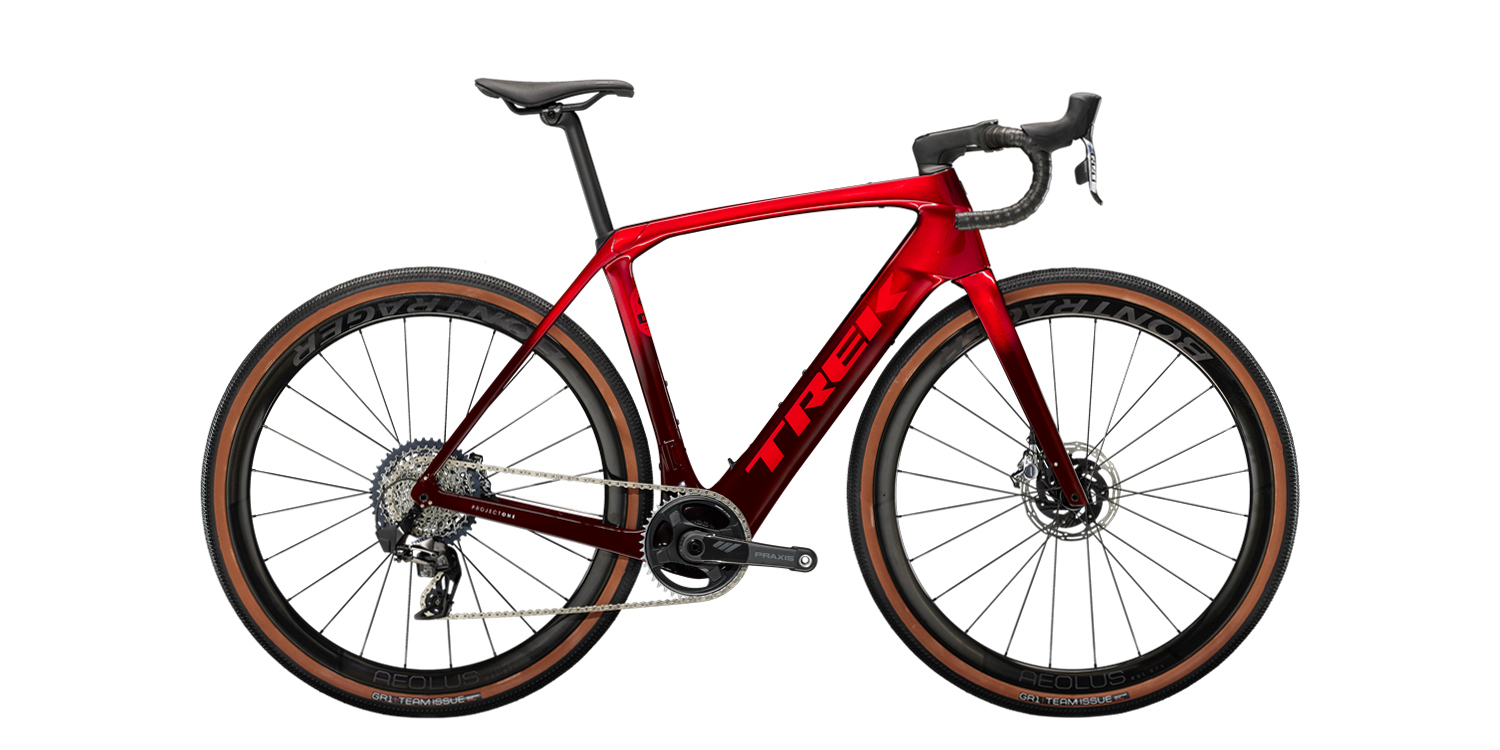
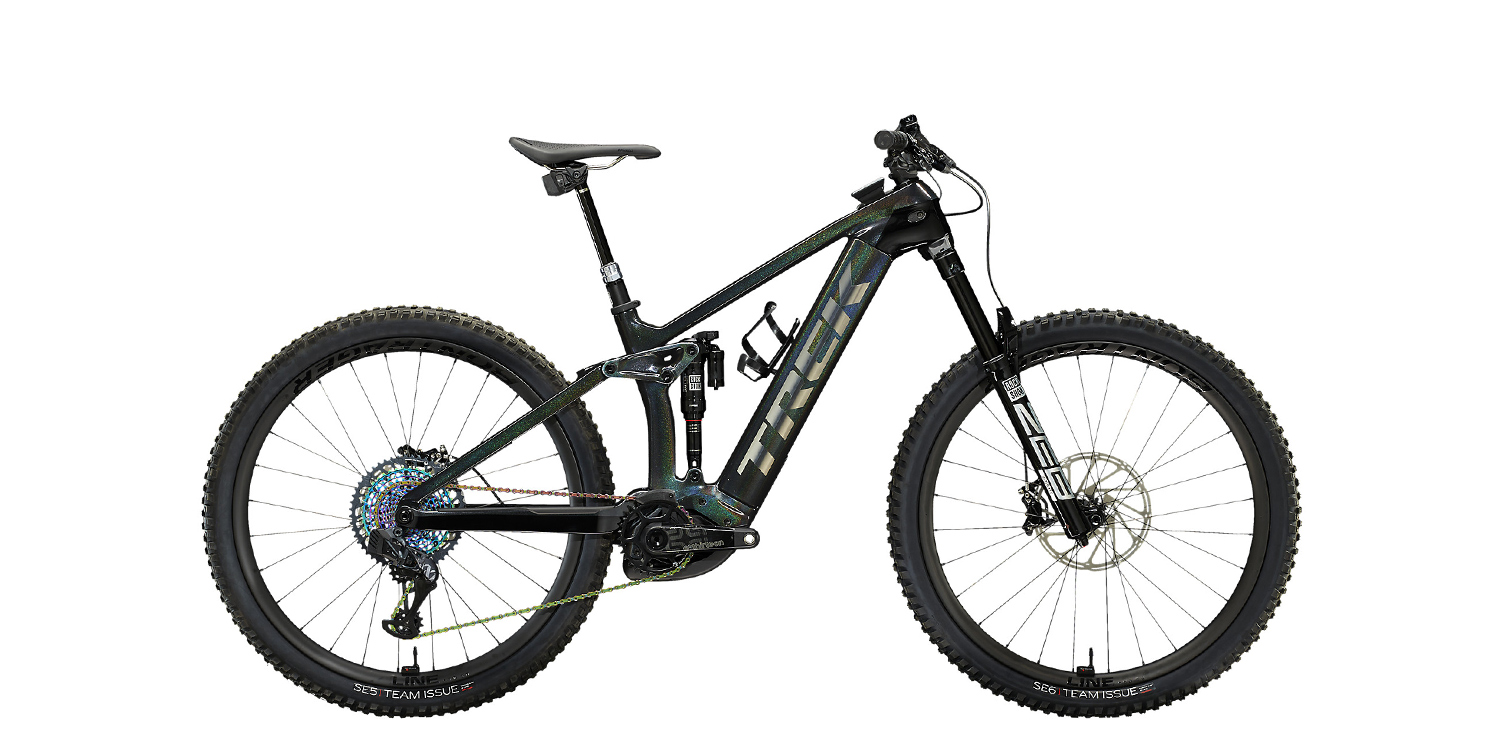
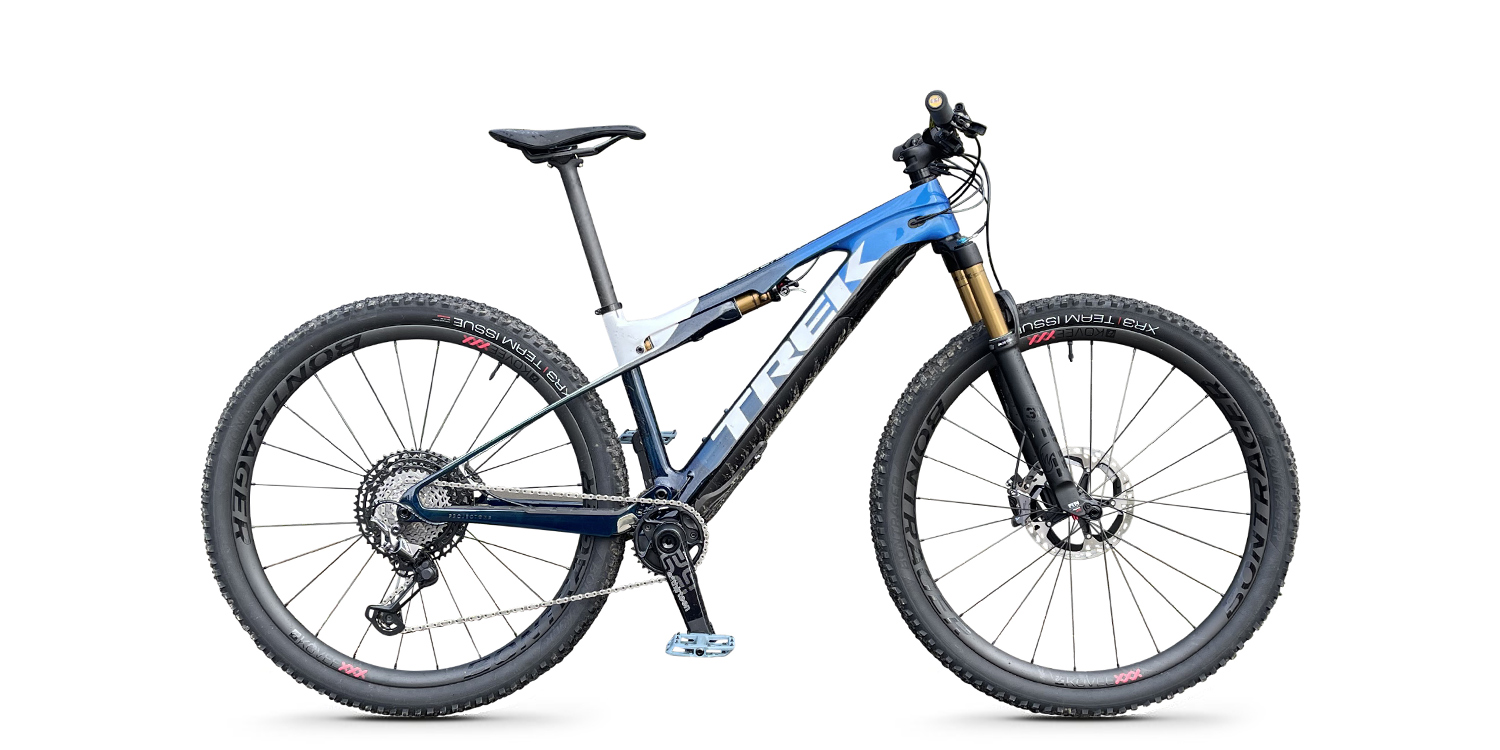
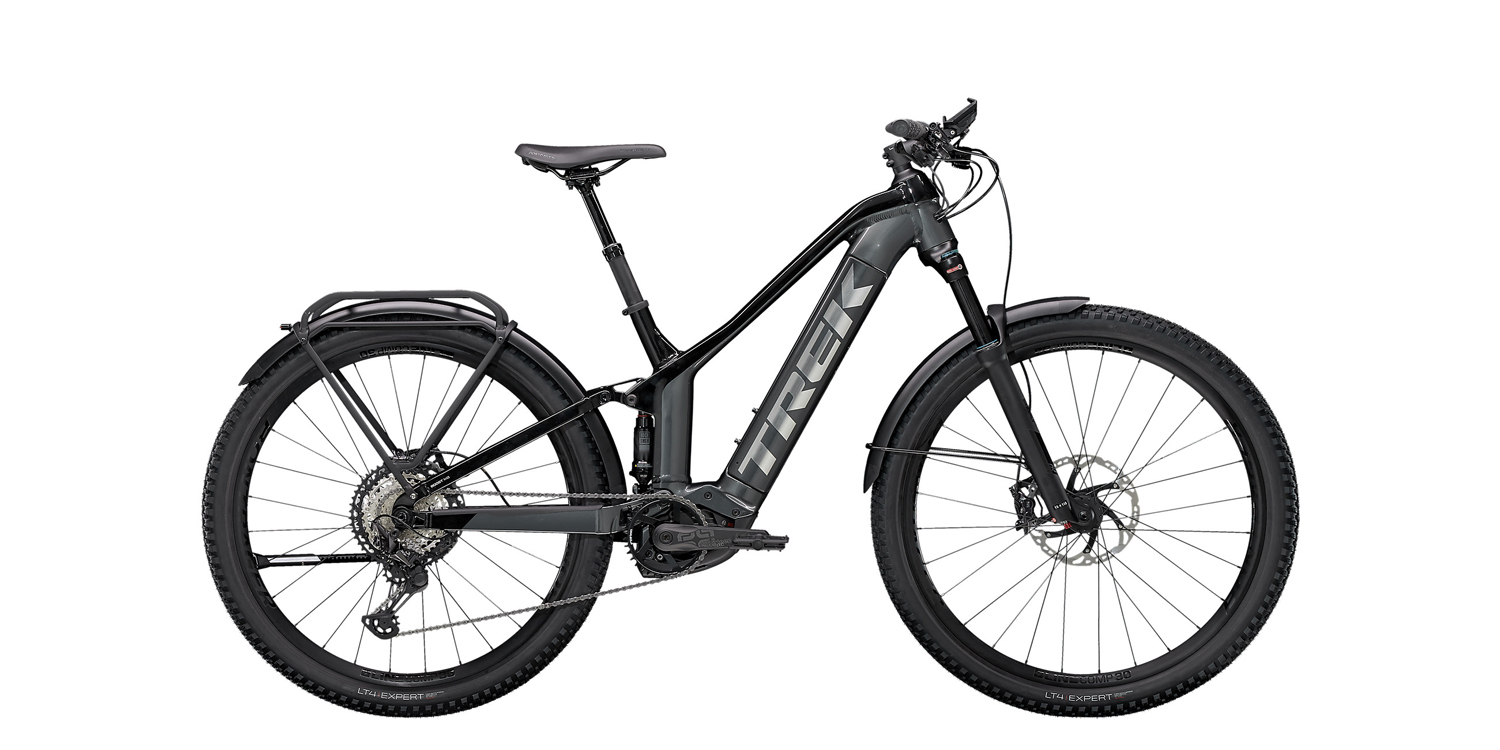
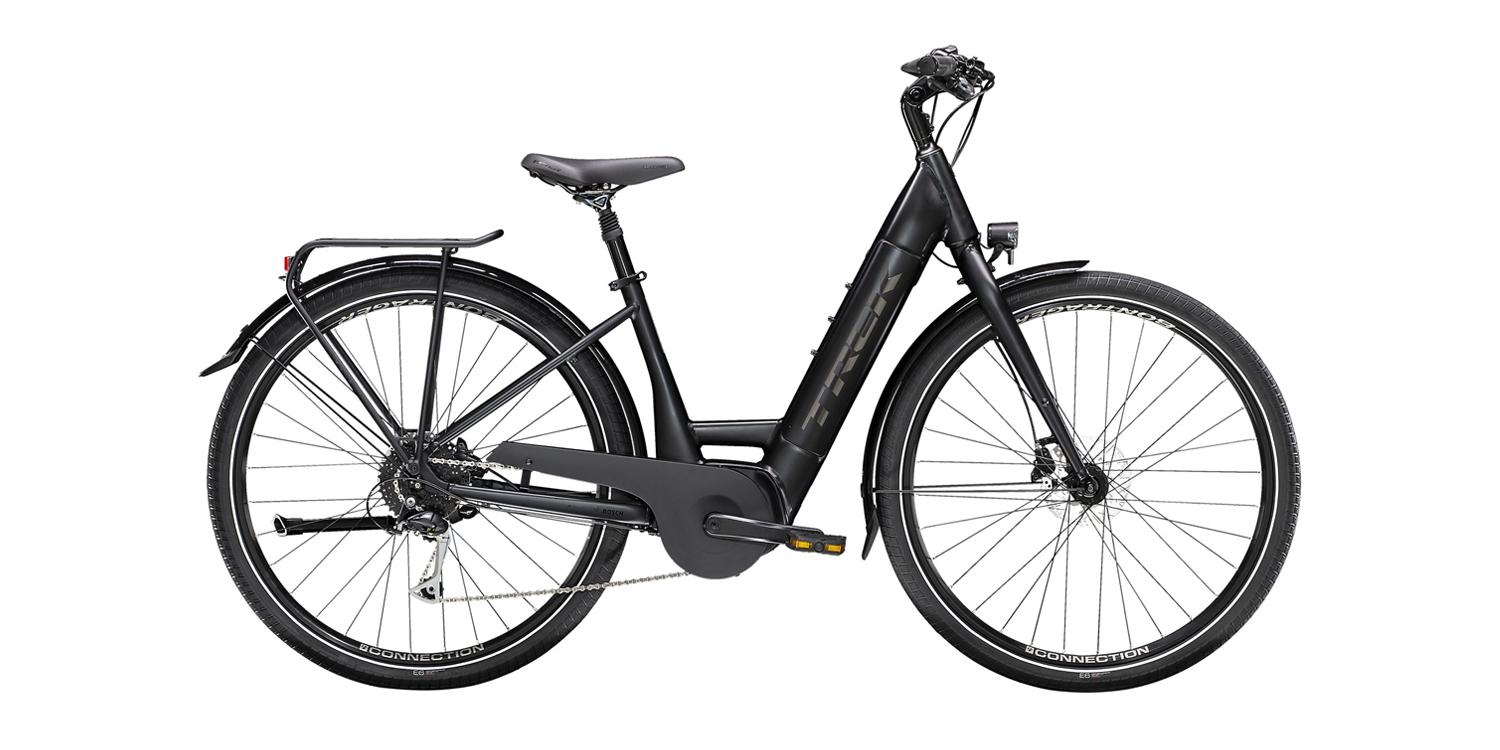
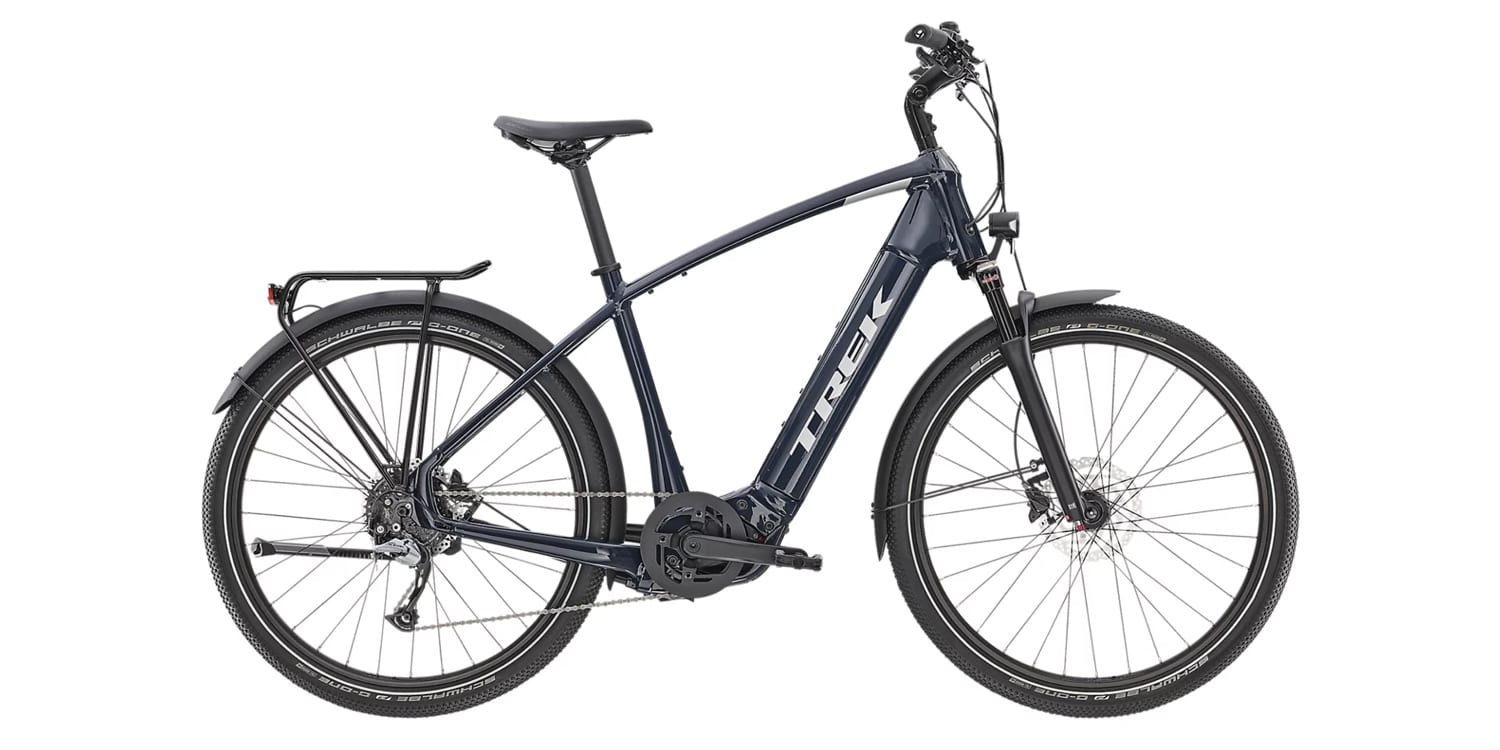
Jeff Backes says
I have the same bike purchased last October. I can not get the Walk feature to work. I took it to my LBS yesterday they “enabled” the walk feature using the Bosch software but still does not work as expected.
I press the walk button, release it, then press the + button no joy :(
jeff
Court Rye says
Hi Jeff! So you’re saying that walk mode does work but you have to hold the + button constantly correct? That sounds right to me, perhaps I explained it incorrectly in the video. If you could design it your own way, what would you prefer? Maybe I can share the feedback with Bosch at the next ebike event they put on :)
jeff backes says
Court,
I have tried everything I could think of. Press walk – press and hold plus. Press walk, release then press and hold plus. Press walk, stand on head press and hold plus. Plank on saddle, press walk, release, press and hold plus.
No joy
jeff
Court Rye says
Thanks for the feedback Jeff, I contacted Trek and Bosch and was told that Trek purposefully disabled walk mode on all of their Bosch powered ebikes. Bummer, sorry for the inconsistent information from me.